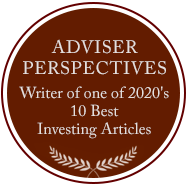The World Is Flat: Challening Convention
3 August 2007, Wealth Manager
It was late summer of 1992 when George Soros saw an unusual opportunity aligning in the then rarified world of currency trading. A dozen years earlier, the European Economic Community [the forerunner of the EU] had introduced the Exchange Rate Mechanism–a precursor to common currency–to help keep continental currencies in a stable trading range to one another. But such exchange rate coordination was regularly tested since member countries controlled their own interest rates. And when opposing rate moves tugged at currency links, central banks would coordinate intervention–purchasing weaker currencies and selling stronger currencies to sustain exchange rates.
Soros saw that the British pound had entered ERM overvalued relative to core European currencies. To maintain this link, Britain was forced to push up interest rates. Yet, the rising cost of borrowing was a drag on the country’s already stagnant economy. Soros, along with a few other insightful investors, saw an imbalance that could not stand.
Yet to bet big against sterling was to challenge the collective commitment of Central Banks across Europe to sustain exchange rates, and to believe instead that market forces would subsequently rule. A month later, when the German Bundesbank, the standard bearer of continental currency policy, grudgingly acknowledged the futility of further attempts to prop up sterling, the game was over. Britain allowed its currency to float, and Soros was a billion dollars richer.
The most successful investors challenge convention. This doesn’t mean they view the world through tinted lenses hoping to will events their way. Rather, they see with greater clarity than the rest of us, looking past typical biases to identify opportunities.
Questioning convention is especially important in configuring global portfolios in today’s volatile markets, whose added uncertainties can further obstruct investors from establishing the most sensible long-term positions. Through several basic examples below, we show advisors where they can start challenging popular notions about foreign investing.
Weighting the World
Perhaps the most widely held belief about building a portfolio of stocks is that it should be market-cap weighted. This suggests that an investor does better by holding more of larger companies and less of smaller companies.
To some observers like Princeton economics professor Burton Malkiel, the author of “A Random Walk Down Wall Street,” despite these concentrations, outperforming market-cap-weighted indices is a pretty difficult thing to do. The majority of active managers underperform their benchmarks because they charge more and, as Malkiel explains, “deviating from the index ultimately involves elements of market timing. To do so correctly over an extended period of time becomes a matter of virtual genius, which is rare to find.”
This suggests the futility of research and the inability of analysts to see value before the rest of the market catches on. When applied globally, this strategy also says that the largest national markets will over time generate the best returns.
Japan’s market capitalization represents more than 22 percent of MSCI’s International index EAFE. Japan’s sluggish economy continues to fight its way out difficulties ever since the real estate bust of the 1990s. And stocks have since performed erratically.
Last year, Japan was the worst performing developed equity market, rising only 6.33 percent in dollar terms. Its five-year annualized total returns through July 26 were 14.84 percent, among the lowest of all developed markets. Ten-year annualized returns were just 2.06 percent–the worst among developed markets. Despite this protracted equity malaise, EAFE investors appear Waiting for Godot as they continue to allocate nearly a quarter of every dollar into this dormant market.
On the other side, the Austrian bourse represents 0.61 percent of EAFE and just 0.30 percent of the MSCI World Index. Its market cap of 128.8 billion is about two-thirds the size of Microsoft. However, Austrian firms are in the forefront of Western European expansion into Central and Eastern Europe, and domestic stocks have been booming.
Over the past 1-, 3-, and 5 years, the Viennese Bourse has averaged annualized growth well above 30 percent in US dollar terms. And its ten-year annualized total return is among the best across developed markets, averaging 16.46 percent. But few international managers have meaningfully benefited from the country’s tremendous performance because of the market’s tiny market-cap.
Paul Casson, manager of the $625 million Ivy European Opportunities fund, proves that investors can recognize opportunities that significantly deviate from market-cap weighted benchmarks. He currently has nearly 45 percent of his portfolio in Greece, Norway, Germany and Spain, whose MSCI Europe index weighting is only 20.3 percent. His contrarian strategy has generated remarkable returns. Over the past year, his fund was up nearly 40 percent through July 25, topping the index by 6.51 percent. And the fund’s five-year annualized returns of 28.68 percent bested the index by more than 6 percent a year.
T. Rowe Price’s $670 million Global Stock fund has also generated strong gains by going against its benchmark. The fund’s three-year annualized returns of nearly 26 percent exceeded the MSCI All Country World Index by more than 7 percent. A key reason driving this outperformance, explains portfolio strategist Kurt Umbarger, is the fund’s heavy wireless exposure: 12.2 percent versus the benchmark’s 1.9 percent weighting. “We see rapid mobile expansion that’s ongoing in countries like Mexico, Egypt, India and China,” explains Umbarger, “where incumbent service providers have limited competition in an industry that has high entry costs.” And Umbarger attributes one-third of the fund’s recent outperformance to its wireless exposure.
Industry Leaders
But is it really essential to venture abroad and contend with learning about foreign markets, especially when advisors can find virtually every kind of industry leader trading here in the states?
Well, at one time last century that may have been true, but not any more. George Evans, who oversees $61 billion in foreign investments as director of International Equities at Oppenheimer Funds in New York, explains that our country’s rising wealth coupled with globalization has produced an economy that’s increasingly service and high-tech oriented. As a result, the top manufacturing firms–from cars and trucks to clothing–are frequently found abroad.
Two such fashion retailers in Evans’ portfolio are Swedish-based Hennes & Mauritz and Spanish-based Inditex, the parent company of Zara. Both large-cap companies are pioneers in developing mass-market, cat-walk chic clothing lines that are designed and brought to market not by the season but in a matter of weeks. This gives both companies a substantial leg up on traditional retailers by offering customers quicker access to the latest trends and giving management the ability to rapidly respond to shifts in consumer taste, all at competitive prices.
Since he established his position in H&M in November 2003, his investment is up 135 percent. And his later move into Inditex in April 2005 has doubled.
Harold Sharon, director of international equities and partner at the NJ-based asset manager Lord Abbett & Co., sees a great number of foreign-based industry leaders. Overall, he believes a well-balanced portfolio should have 25 to 50 percent exposure to international securities, more closely reflecting the global market place.
Australia is home of one of the top natural resources play BHP Billiton, whose shares are up more than 55 percent over the past year, and the pioneer of infrastructure investing, Macquarie Bank, whose stock is up over 75 percent.
The essential business of water is dominated globally by French firms Veolia Environnement and Suez, whose ADRs are both up around 25 percent over the past year. UK-based Vodafone is the world’s leading wireless service provider, having generated total returns of more than 45 percent over the last year. And the leading pure play on wind power–Denmark-based Vestas Wind Systems–is up more than 150 percent.
Emerging Markets
Despite a torrid run that has sent the MSCI Emerging Market Index soaring 46.51 percent annually over the past five years and more than 62 percent over the last 12 months through July 26, many advisors maintain a distance from these evolving economies because of their periodic meltdowns. Four times over the past dozen years, emerging market shares and their currencies have blown up. This has brought 10-year annualized growth to a more down-to-earth rate of 10 percent.
David Riedel, who runs his own equity research firm in New York that focuses on emerging markets, explains that when the fortune of such economies are geared to high growth rates, commodities, and volatile swings in foreign capital flows, they are inevitably prone to significant asset price swings, which get exaggerated by their thin liquidity.”
But managers can mitigate risks, says Riedel, by taking an indirect route into emerging markets through less volatile and more mature develop market companies that are expanding into these regions.
Through his research, Mauro Guillén, Director of the Lauder Institute at the Wharton School and a specialist in Spanish multinationals, found “investors gain added protection by going through developed market companies not only from their initial due diligence related to their acquisitions but from the subsequent synergies achieved in integrating emerging market operations into established companies.”
These benefits include improved management and information technology platforms, cheaper access to capital and heightened treasury risk controls, and more efficient back-office operations. These advantages can subsequently give emerging market operations leverage over local competitors, thus helping the parent company capture the benefits of faster growing markets with less risk.
A good example, explains Brian Younger, former portfolio manager of Fidelity’s Select Telecommunications Portfolio, is Telenor, the incumbent Norwegian telecom service provider. “The company has parleyed its expertise to fast growing emerging markets outside of Scandinavia where costs are lower and margins are richer,” says Younger, “and is effectively managing the higher risks of venturing into these less transparent markets.”
In 2006, 61 percent of revenues and nearly 66 percent of its EBITDA were generated in Central and Eastern Europe and Southeast Asia. The stock has nearly quadrupled in dollar terms from the beginning of 2003 through July 2007 on strong emerging market growth.
Foreign Exchange
It’s probably not a good idea to bet big on currencies like George Soros. Yet, many advisors still don’t see foreign exchange as an asset class.
But all you need to do to convince yourself otherwise is to go to your favorite hotel in Paris. You’ll find prices are 50 percent higher than they were just a few years ago. It’s not due to inflation. This is the power of foreign exchange. And to profit from the constant fluctuation in exchange rates that can erode buying power both here [through imports] and abroad, advisors should consider gaining professionally managed currency exposure rather than avoiding it. For in reality, that isn’t possible in today’s globalized economy.
Still, convincing even some seasoned professionals of the merits of currency management is an uphill battle.
Marc Chandler, global currency strategist at the venerable New York Bank Brown Brothers Harriman, observes that the dozens of US-based equity fund managers that clear billions of their currency needs through the bank do not view foreign exchange as an asset that should be managed. He thinks this view comes from a failure to understand the dynamics of foreign currency, a desire to avoid the cost of executing an FX strategy, and the belief that over time, the change in investment value attributable to foreign exchange nets itself out.
Chandler posits that a proactive response to foreign exchange can actually capture profits and reduce volatility, regardless of which direction the dollar is trending. He points to many of his bond fund clients who regularly hedge their foreign exchange exposure because the volatility of the underlying currency typically exceeds that of foreign bond prices.
Many institutions, foundations, and pension fund managers have found that pure currency investments helps improve the overall risk-return rewards of their portfolios. Dublin-based Appleton Capital Management offers such exposure through its “25 Percent Risk Program.” Since its inception in the beginning of 1995, the fund has generated net annualized returns of 14.6 percent through June 2007, which bested theS&P 500 by 2.74 percent a year.
“Moreover,” explains Jeremy O’Friel, director of Appleton, “currency performance is virtually uncorrelated with both stocks and bonds [0.04 percent], which means over the long term, properly managed currency investments can reduce a portfolio’s volatility.” Accordingly, O’Friel believes high-net worth investors and institutions should commit five to ten percent of their portfolio to currencies.
Over The Counter
It’s probably the rare advisor that invests in Over The Counter stocks because such shares have the dubious reputation of having flunked out of US exchanges. However, a recent ruling by the SEC, which is enabling foreign companies to delist and sidestep costly adherence to Sarbanes Oxley, has sent a slew of big foreign companies fleeing our listed markets. These include UK flagship carrier British Airways, Swiss temporary staffing giant Adecco, and Telenor.
“As many as 60 large foreign firms are expected to leave the NYSE and NASDAQ by the end of the year,” according to Cromwell Coulson, CEO of Pink Sheets, LLC, the leading provider of pricing and financial information for OTC securities. With these delistings joining a bevy of big name firms that only trade OTC, such as Nestlé, Cathy Pacific, and Hutchison Whampoa, Coulson expects more than 400 ADRs to be trading on the Pink Sheets by 2008. So for advisors prohibited from buying non-dollar shares, this may be a market worth checking out to gain foreign exposure.
Risk and Volatility
Despite a boatload of evidence that should ease worry, some advisors still remain nervous about venturing outside the states. Looking at the standard deviation of international markets versus the US in dollar terms over the past 10 years through late July, inclusive of bull and bear markets, MSCI found that average monthly volatility of EAFE was actually less than the US: 4.29 versus 4.33 percent.
The widely recognized Efficient Frontier chart plots total returns versus standard deviation for portfolios that vary in holdings from 100 percent US to 100 percent EAFE. It shows that from 1971 through 2006, a portfolio comprised of 40 percent exposure to EAFE has slightly less volatility than a pure US portfolio while generating an additional 16 basis points of return per annum versus the S&P 500.
Looking at the sharp global correction of late February reveals two additional points: developed markets across the globe are moving more closely with one another and US investors are not safer staying at home during bouts of volatility.
Early in 2007, stocks peaked during the last week in February when EAFE’s total return in dollars for the year was up 5.38 percent and US shares were up 3.58 percent. Within ten days, the worst of the turbulence was over with international shares having given up 6.85% from their peak. US shares faired a bit better having declined 5.84% from their February highs.
Then from the bottom of the correction on March 5 through July 23–before the mid-summer shock wave hit–EAFE rallied 16.19 percent, producing year-to-date returns of 14.05 percent. US stocks bounced back 12.84 percent, generating year-to-date returns of 10.05 percent. The weakening dollar contributed to EAFE’s outperformance. But the foreign index still outperformed the US by 13basis points when measured in local currency terms.
Asset advisors have remarkable choice. But many don’t take full advantage of this opportunity because of restrictive mandates or a belief that clinging to convention is a safer way to go. But safer for whom? Says Ivy fund manager Paul Casson, “until they are weaned off of certain traditions that have proven to be counterproductive, outperformance will likely remain the providence of the more independently minded managers.”


 GIR's Investing in the New Europe
GIR's Investing in the New Europe



